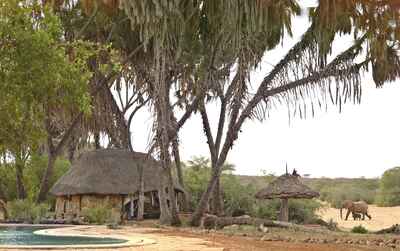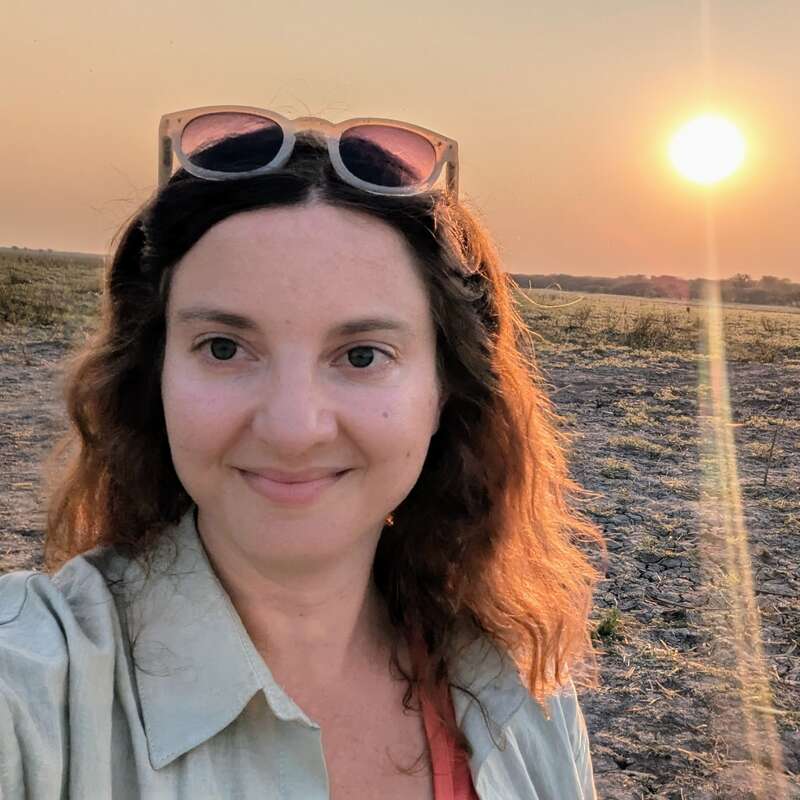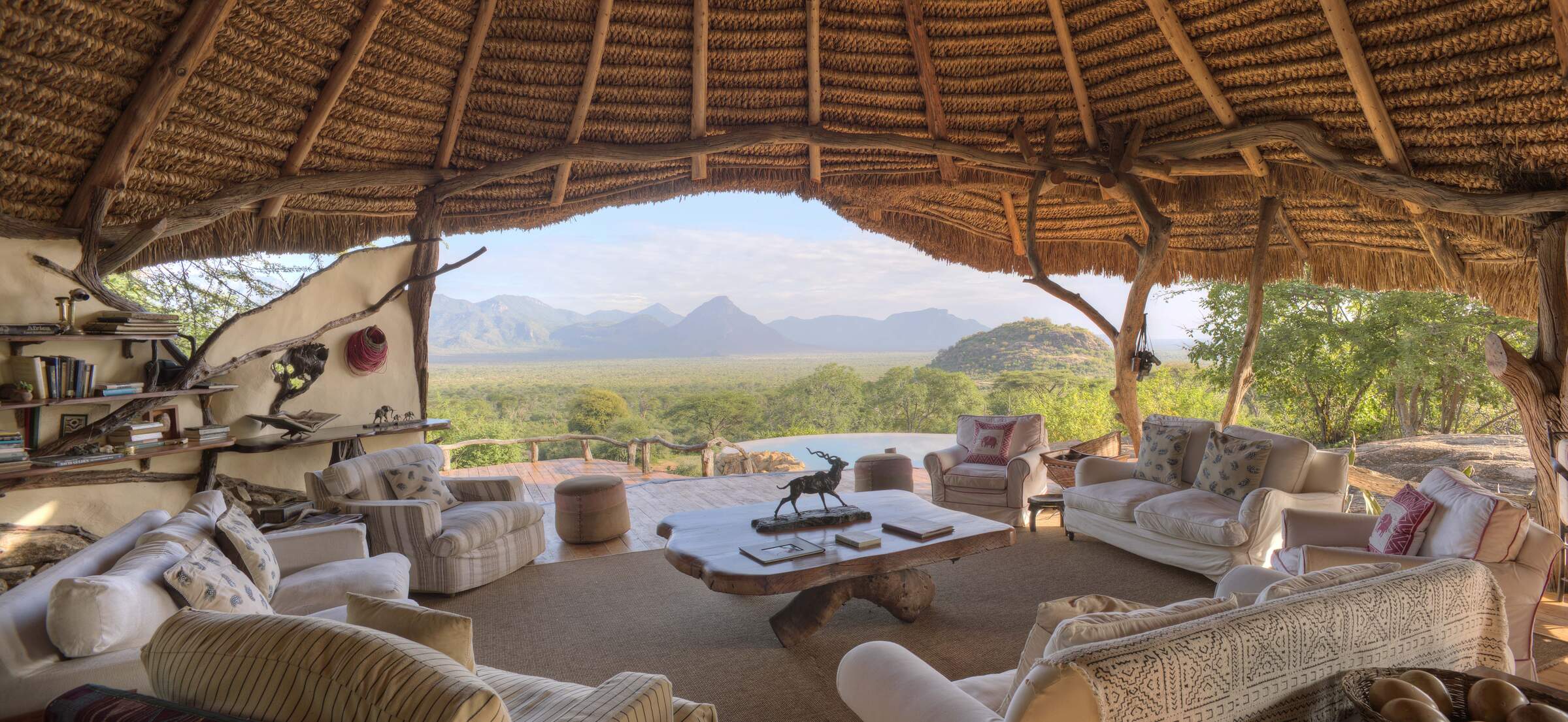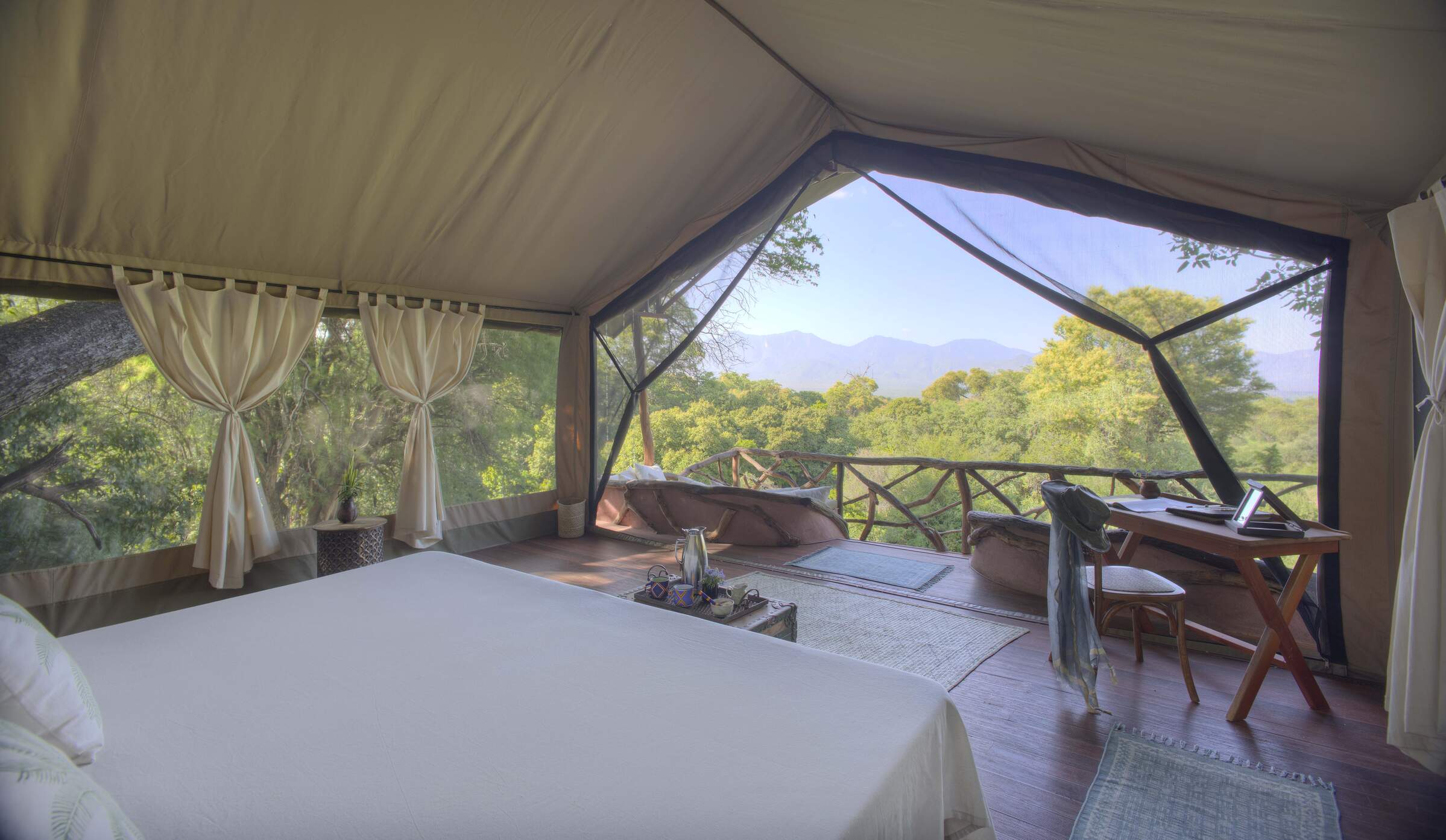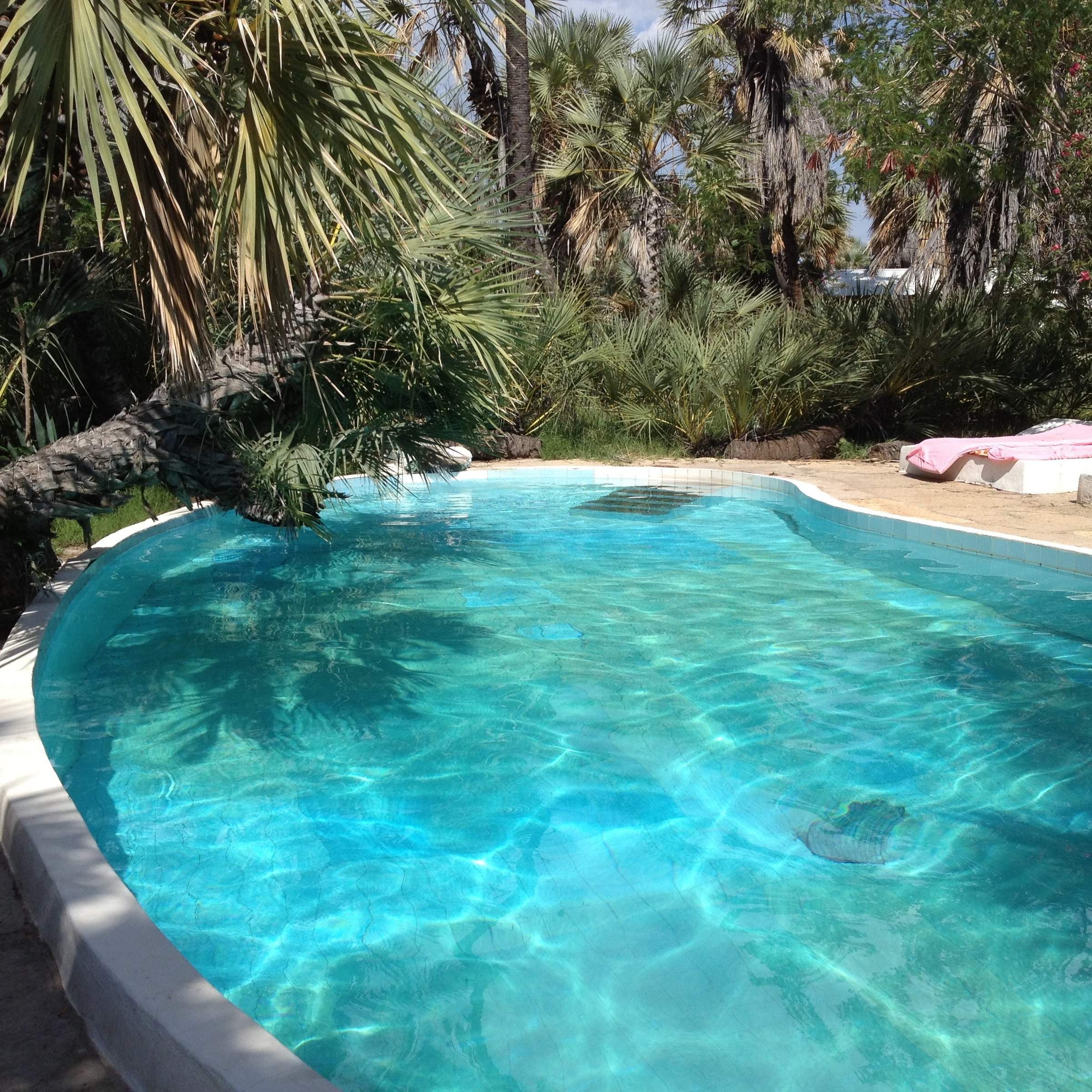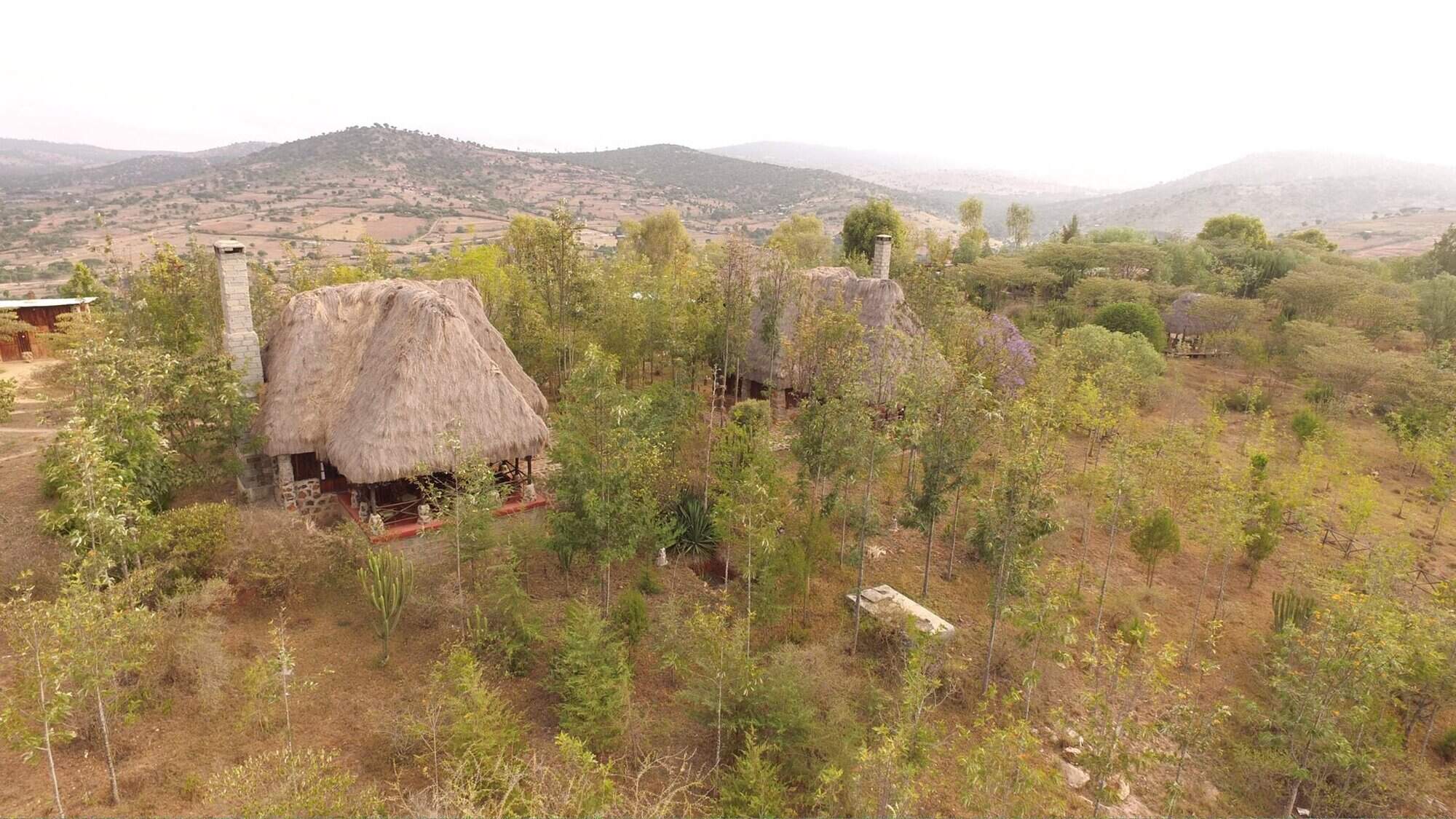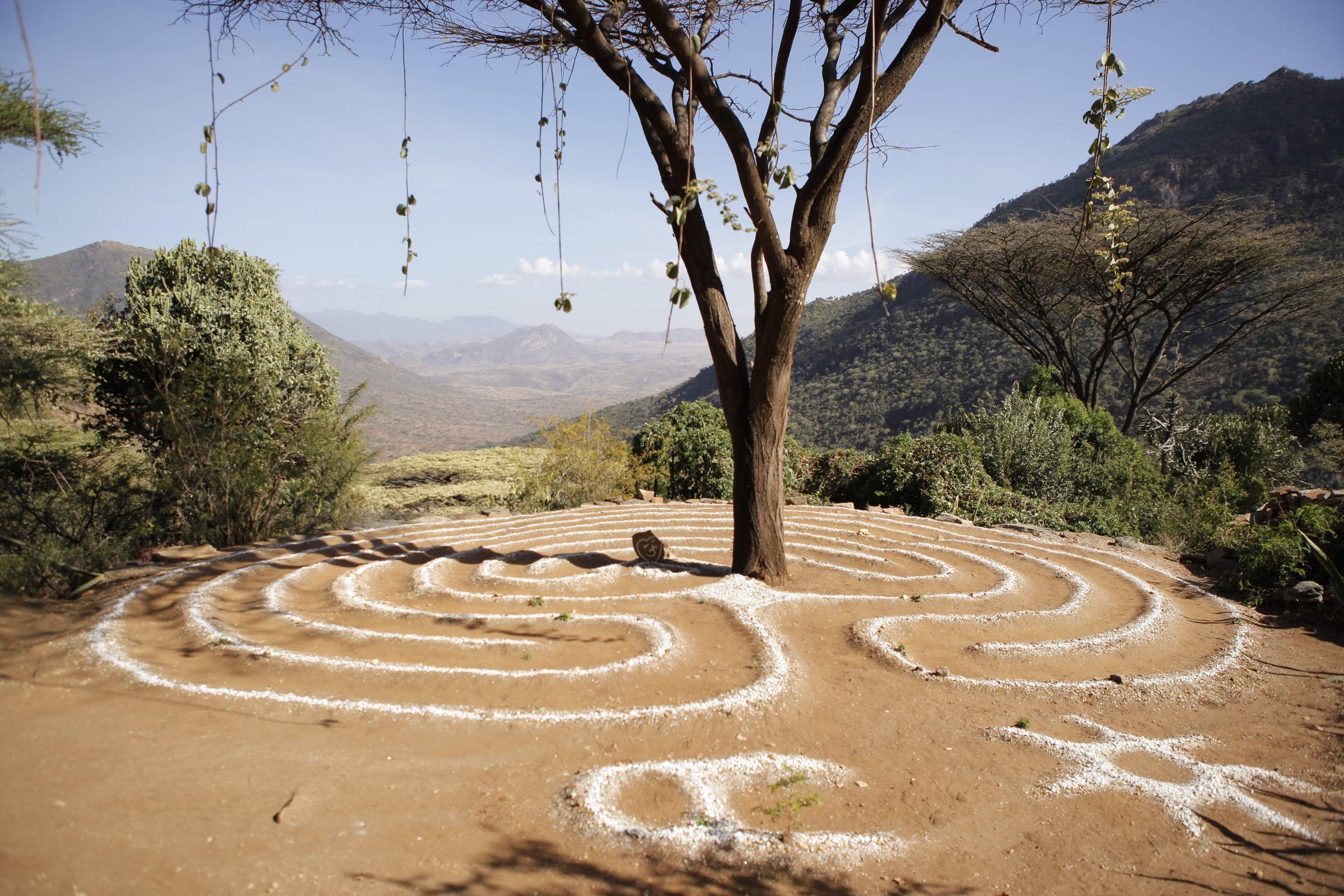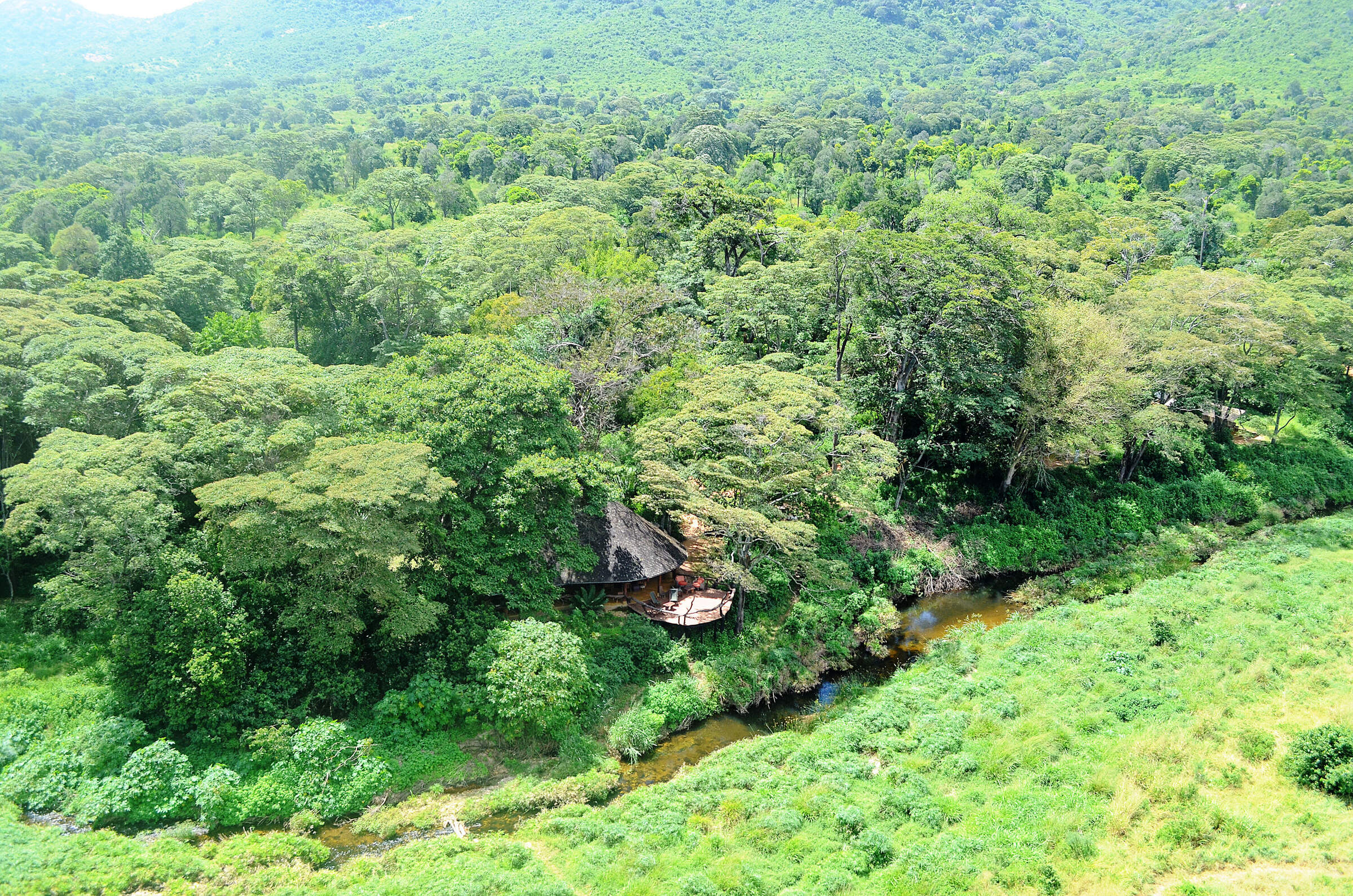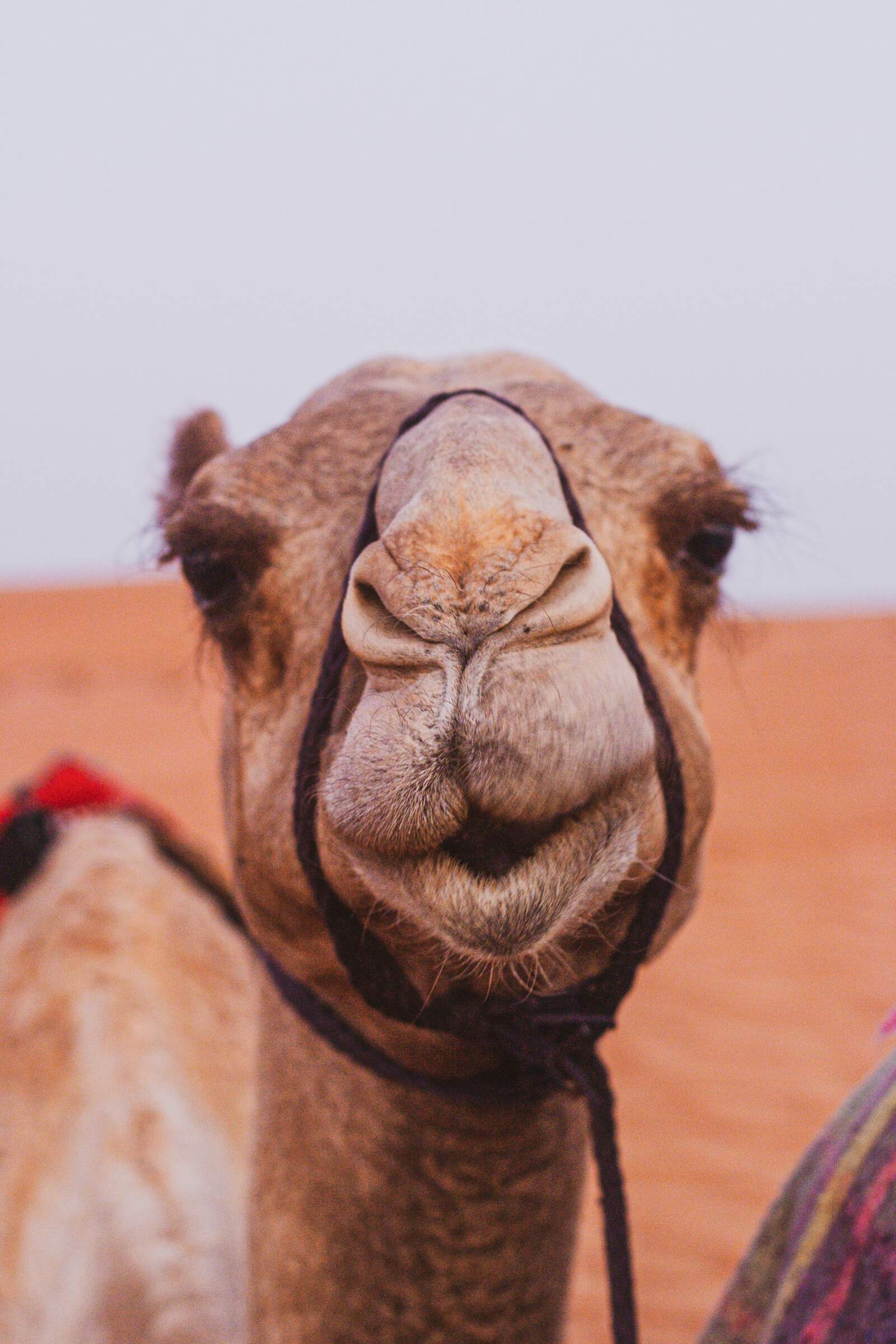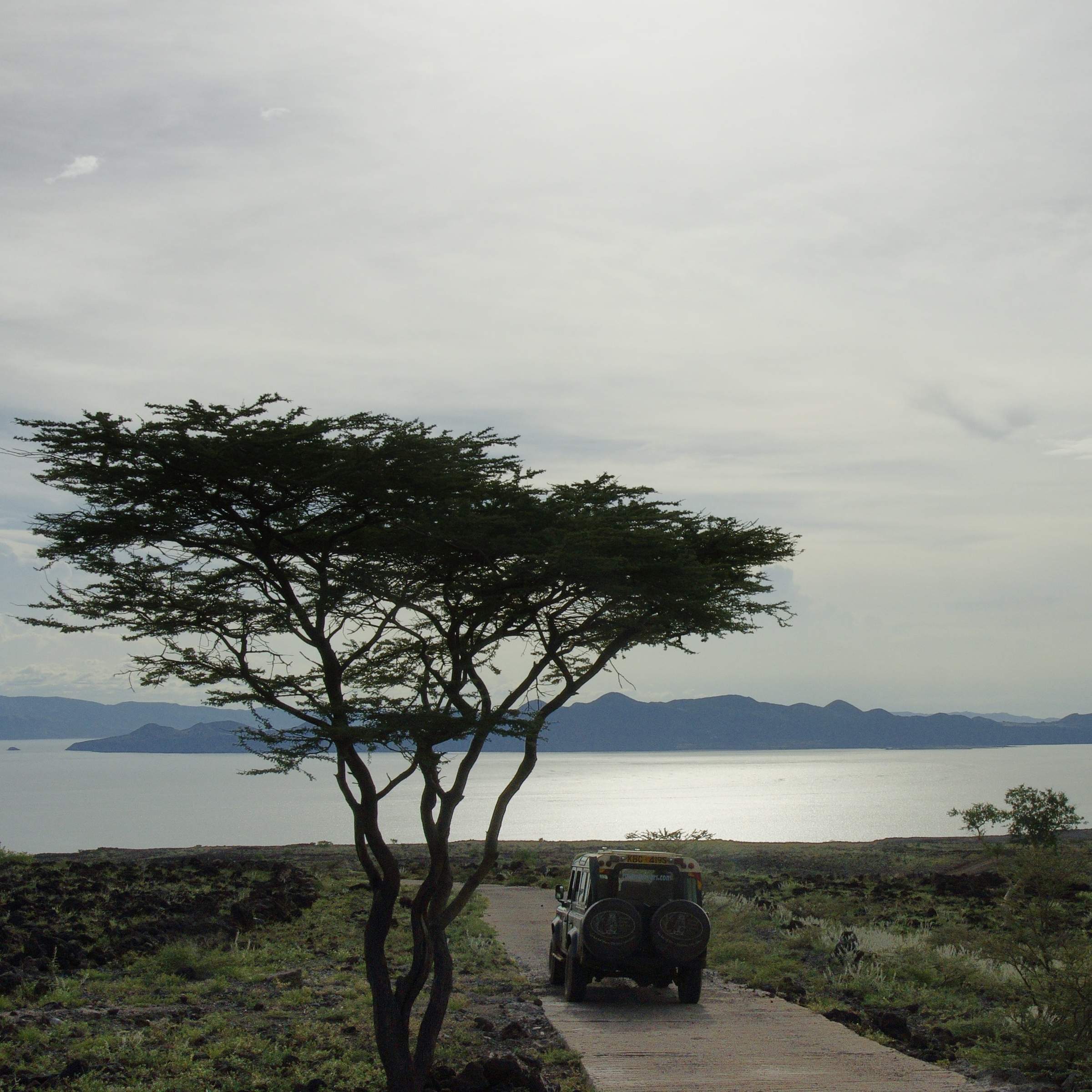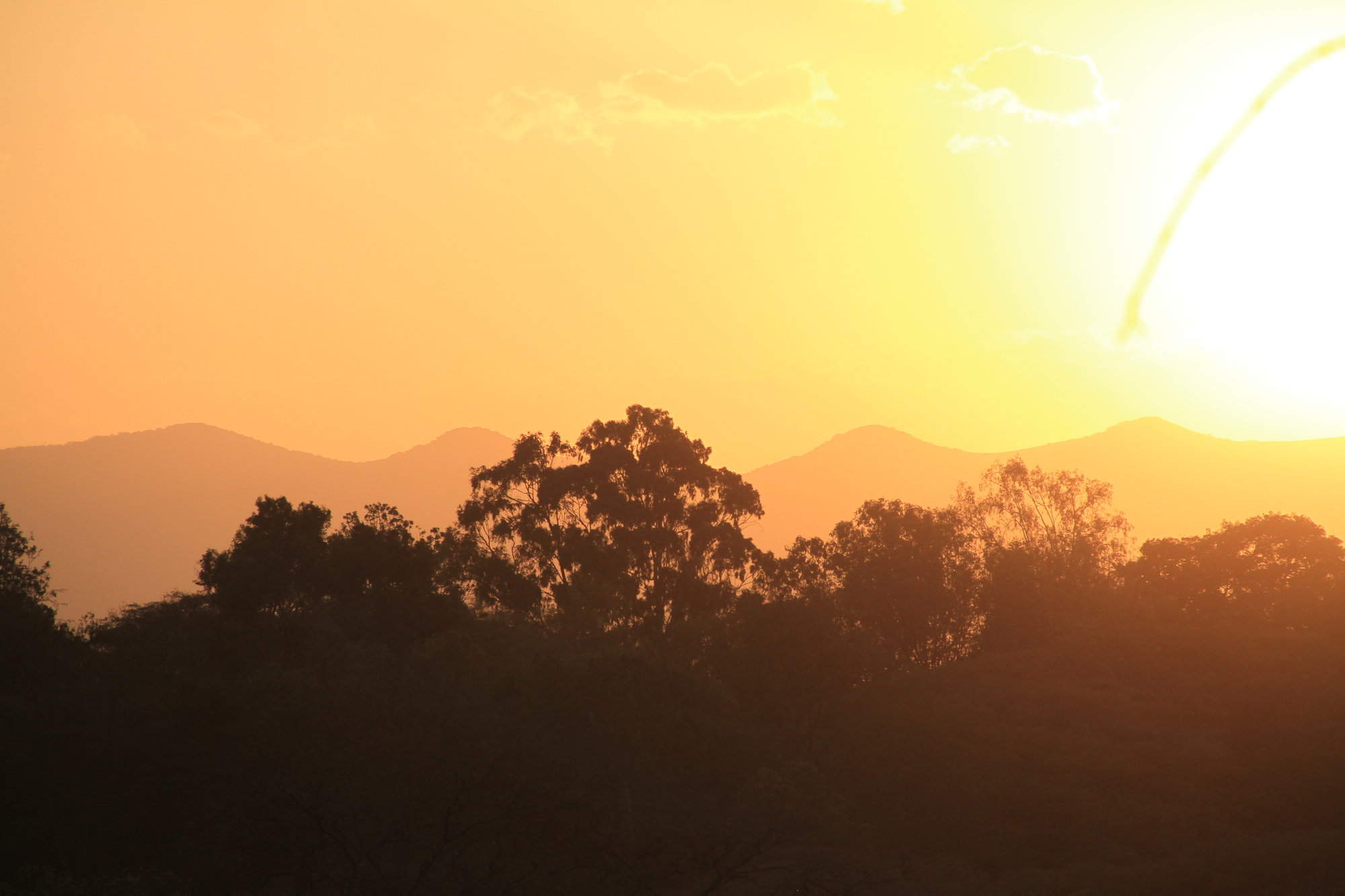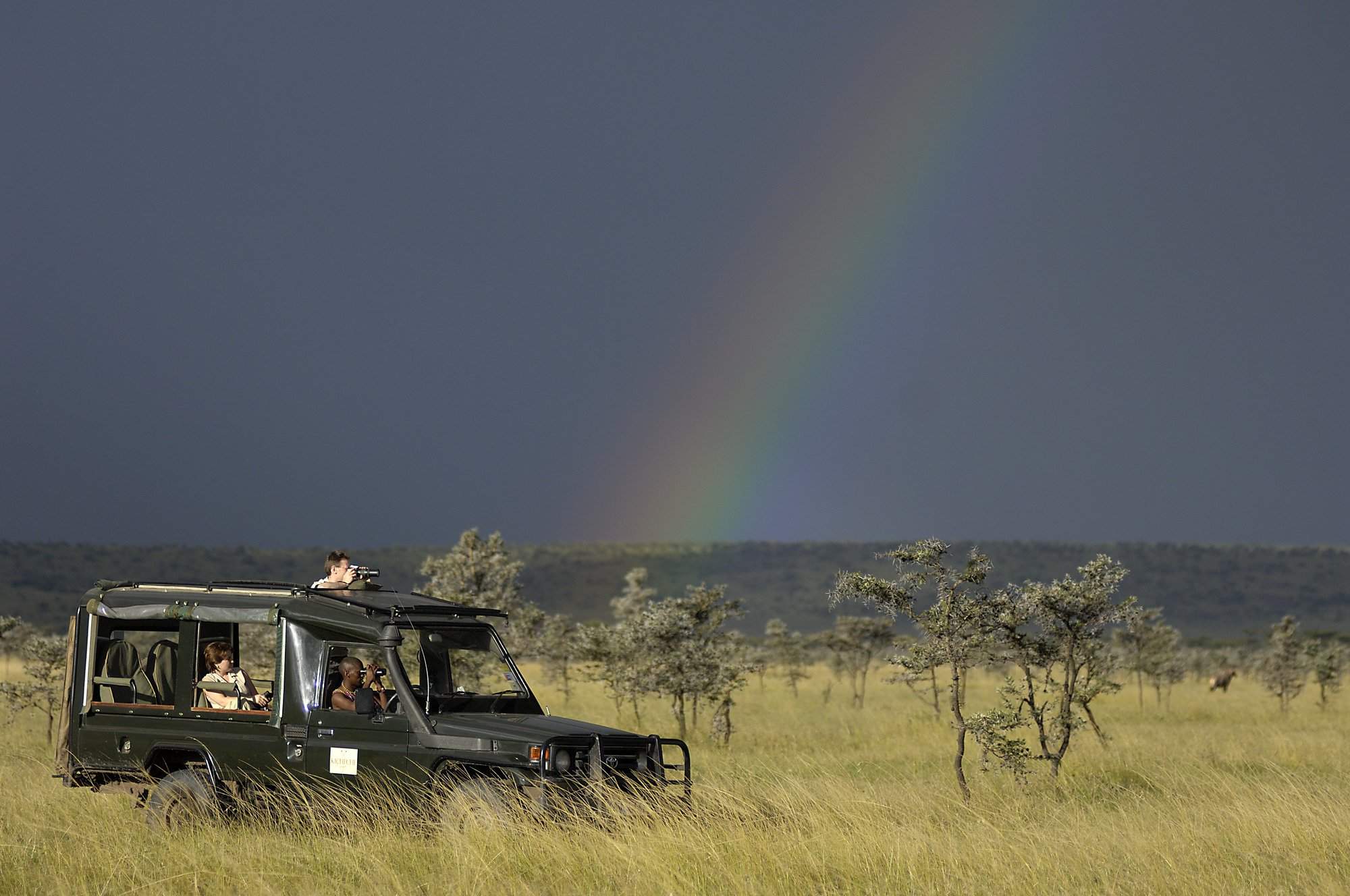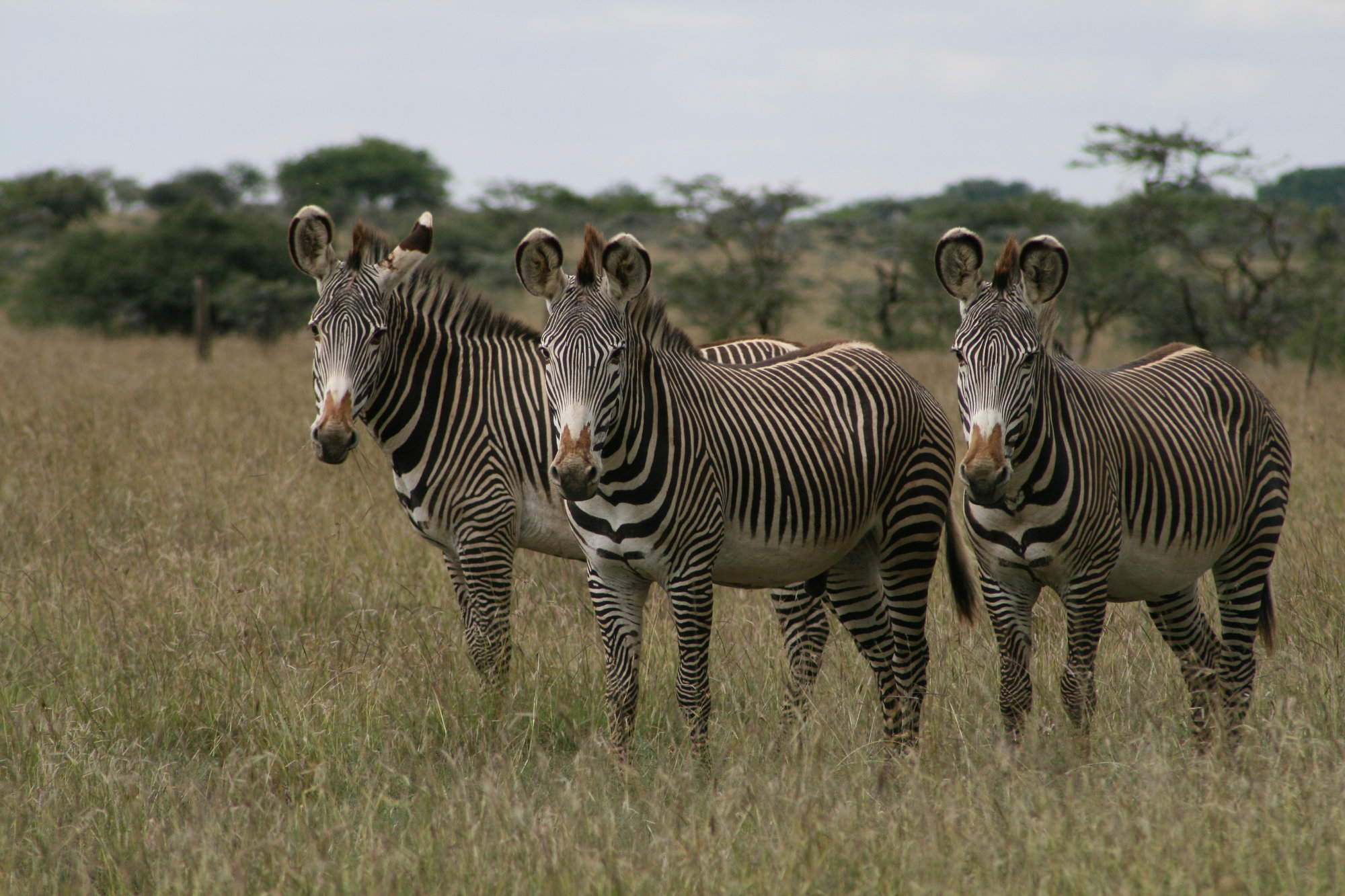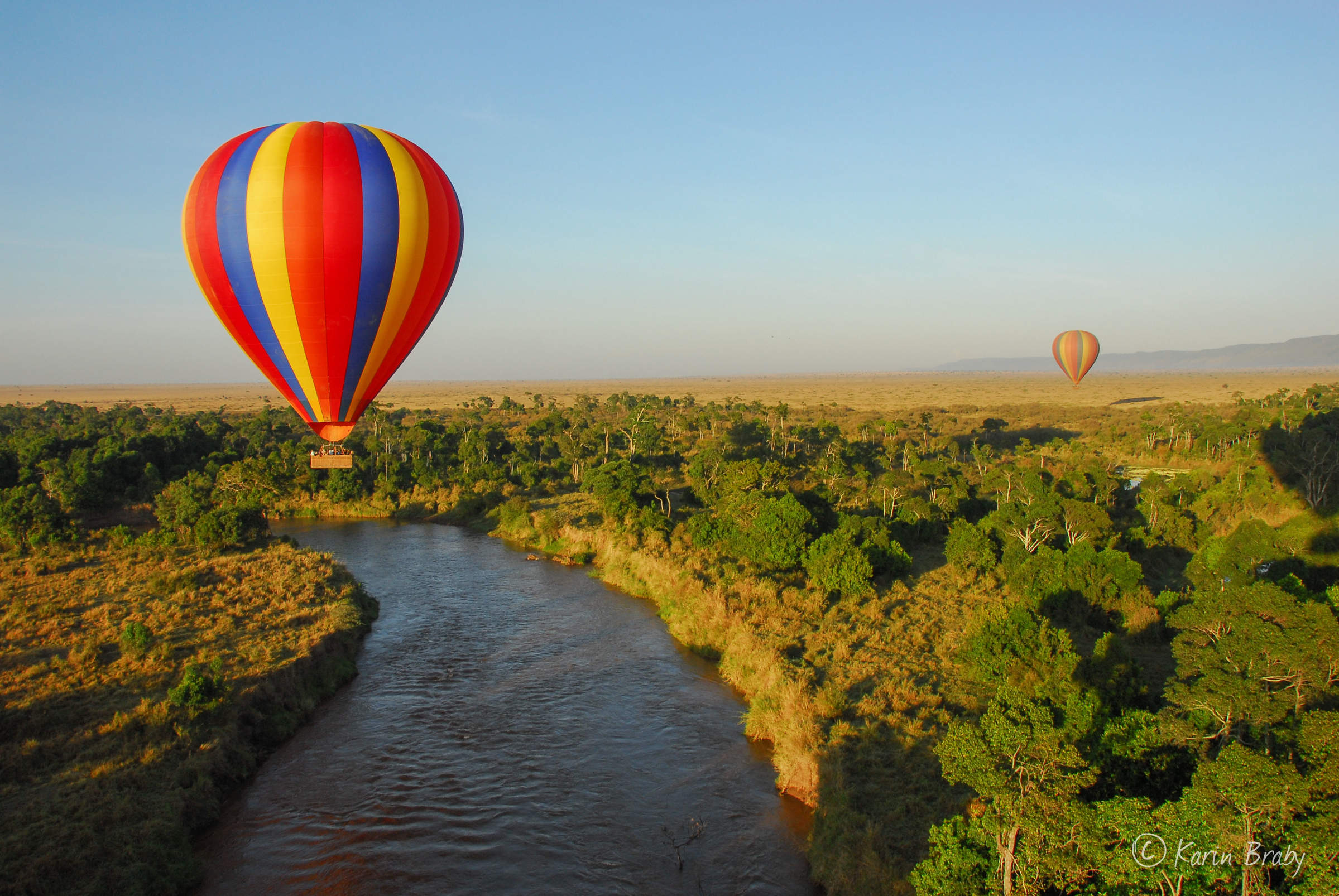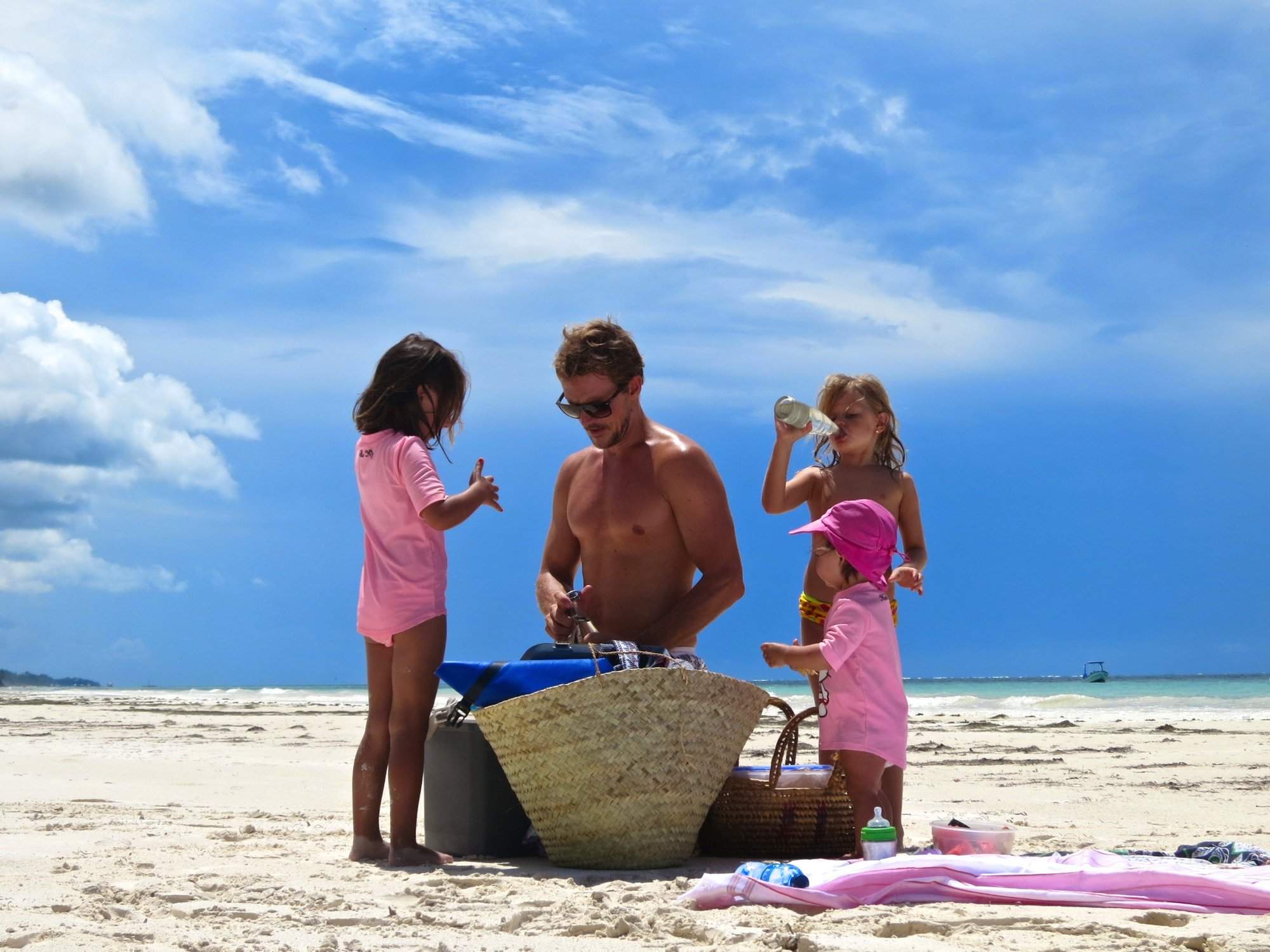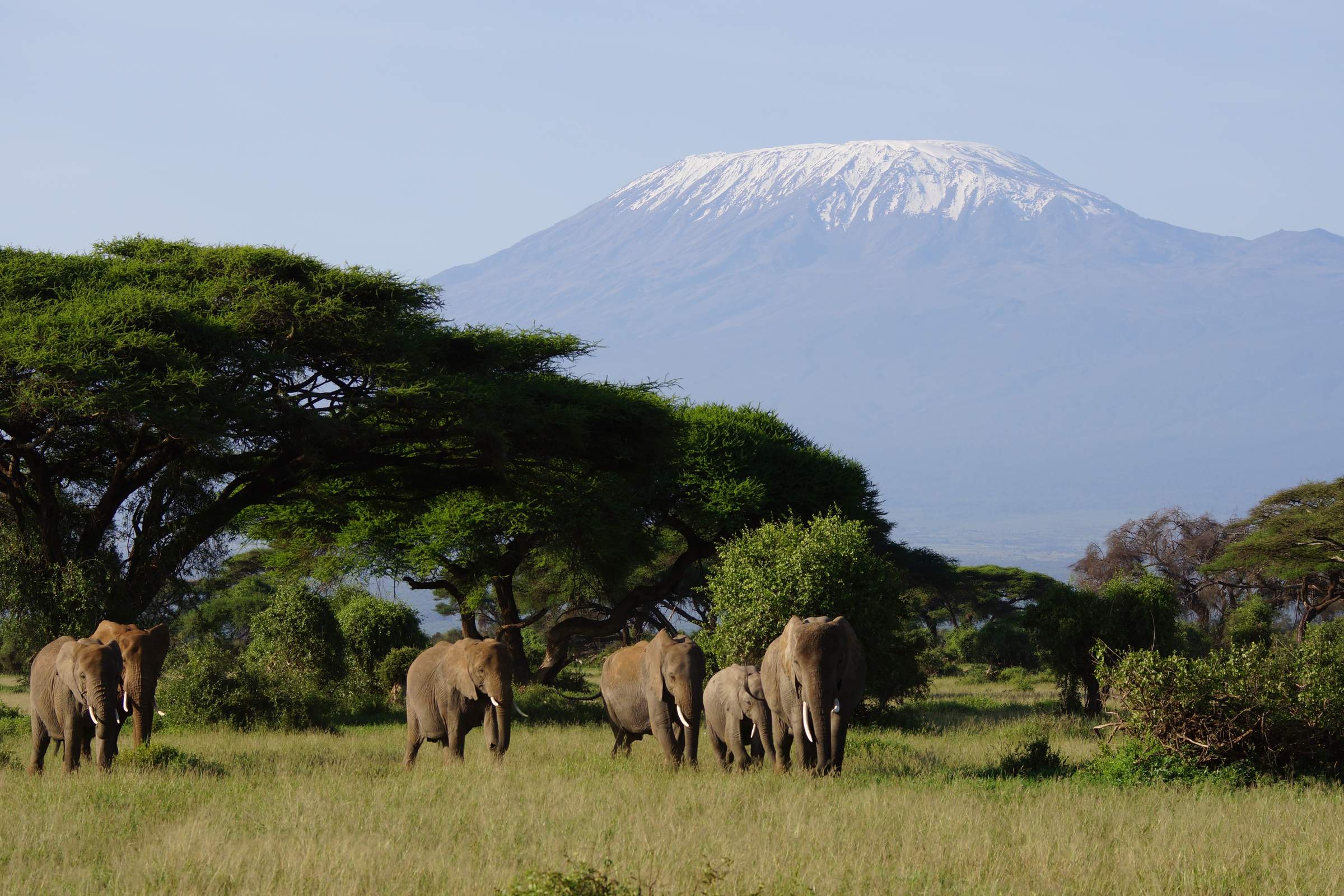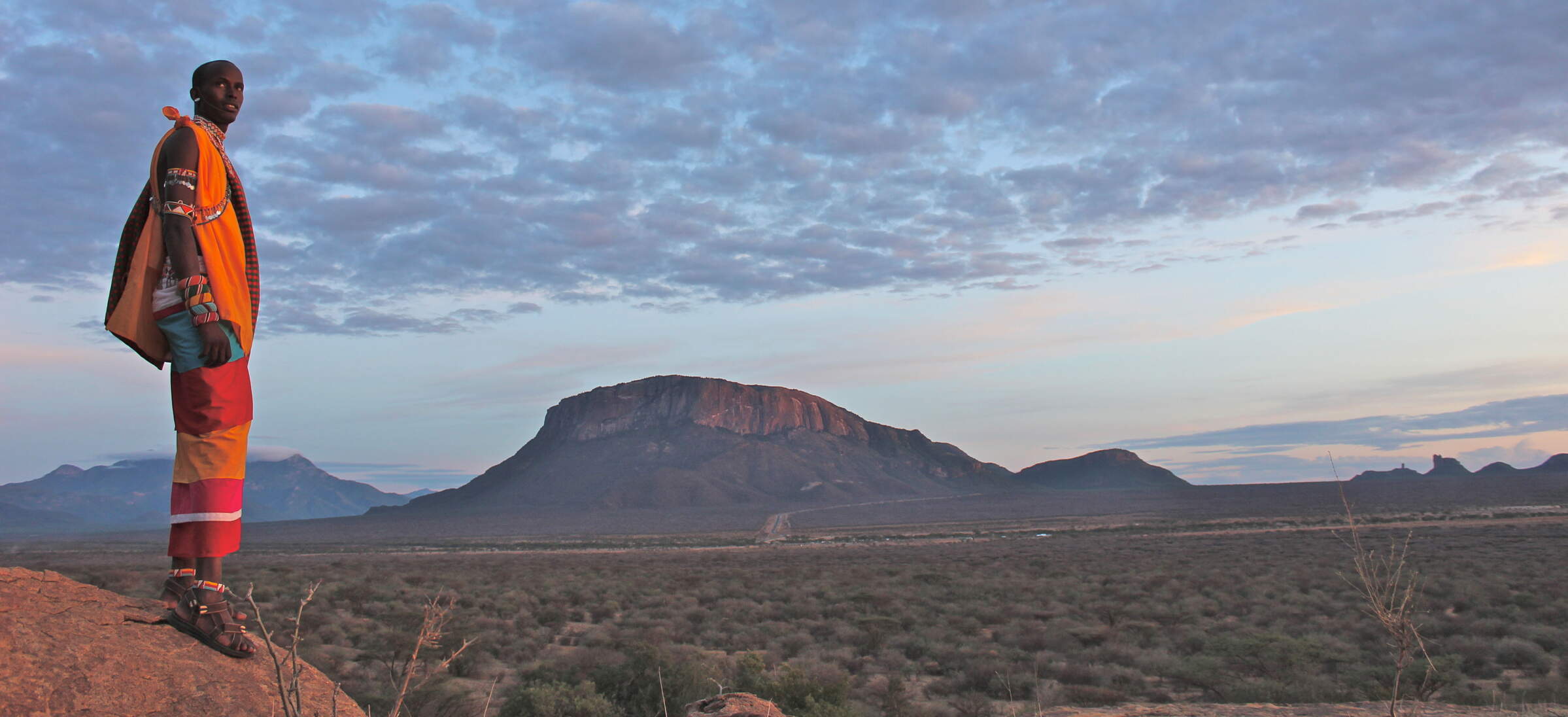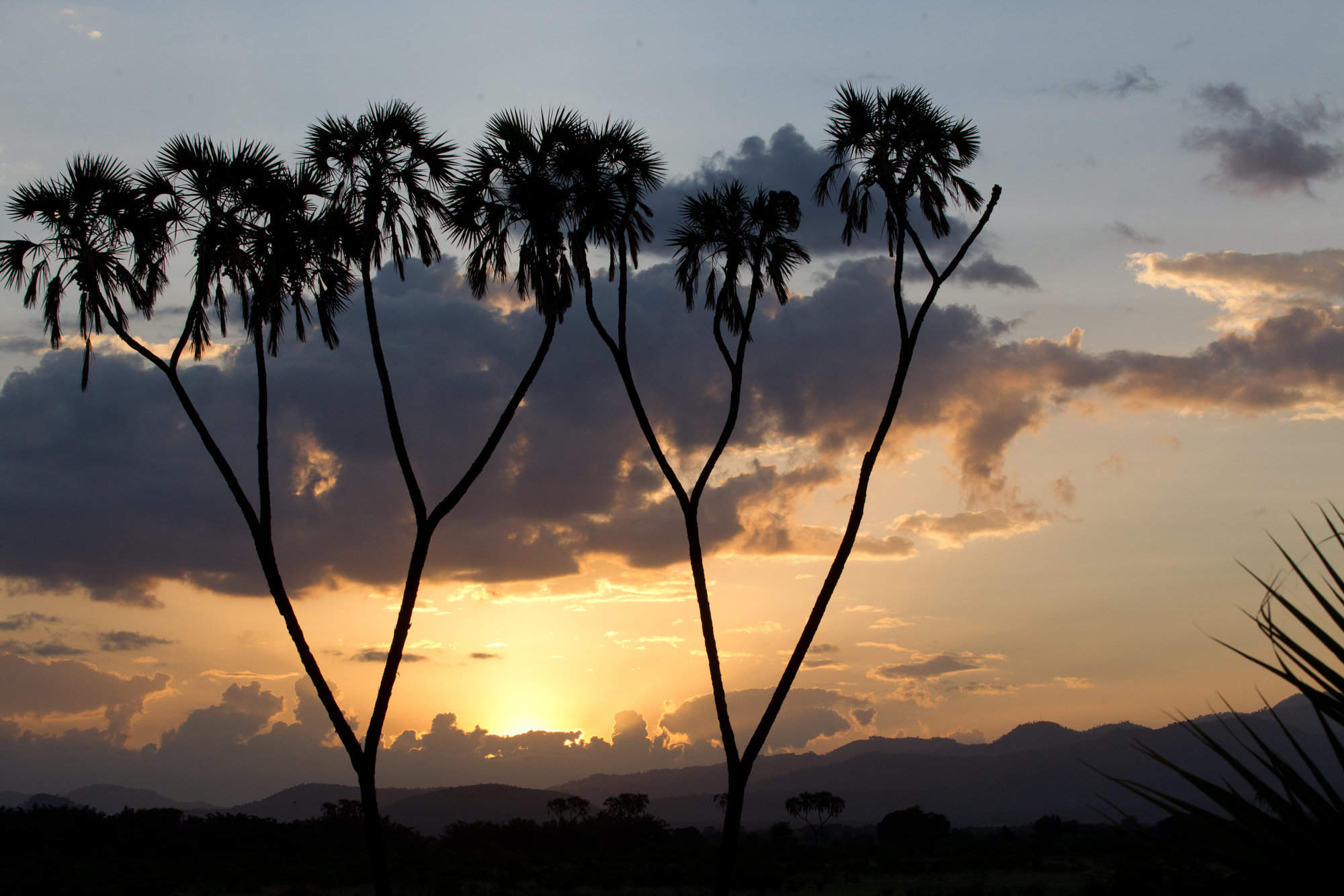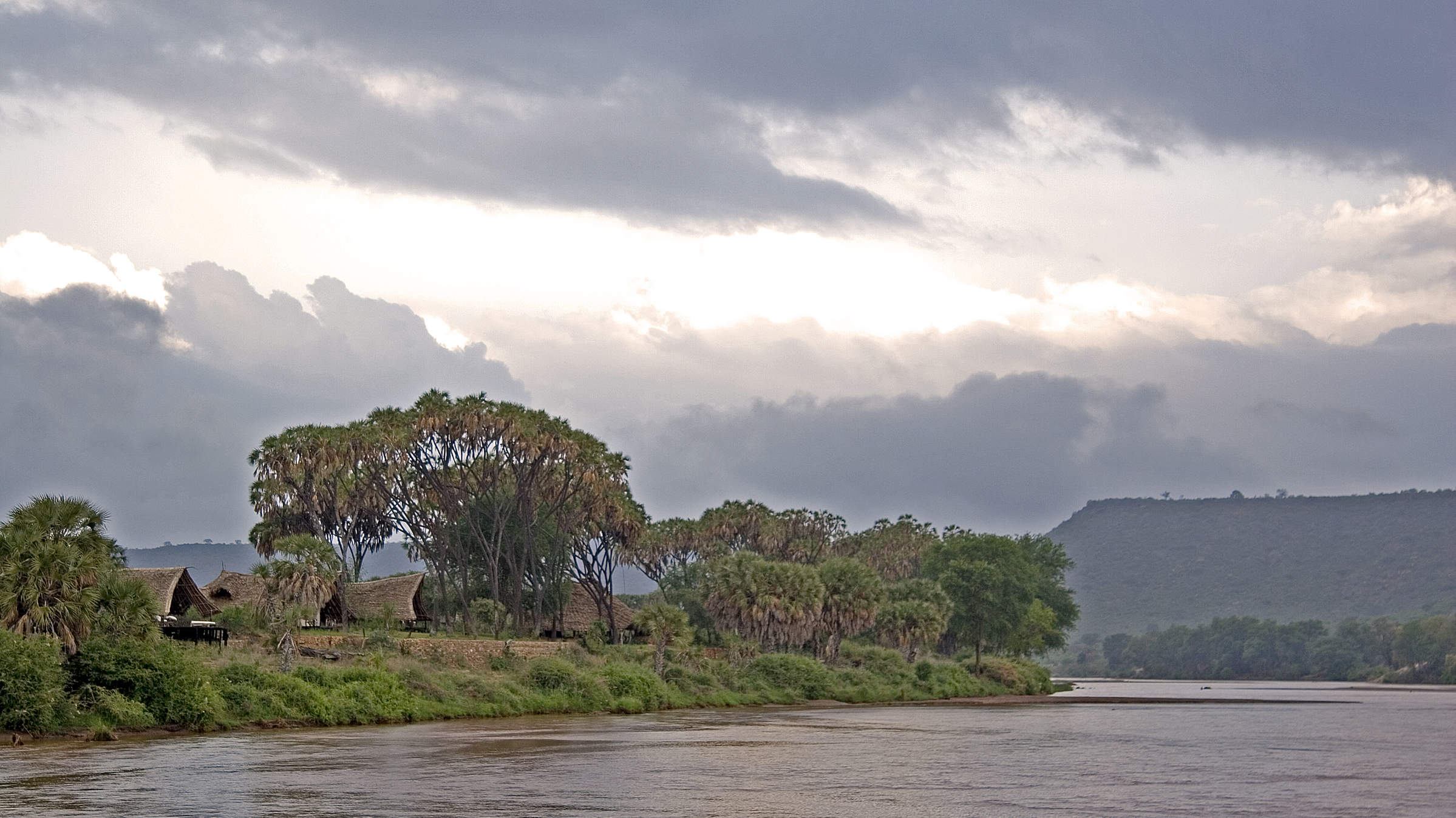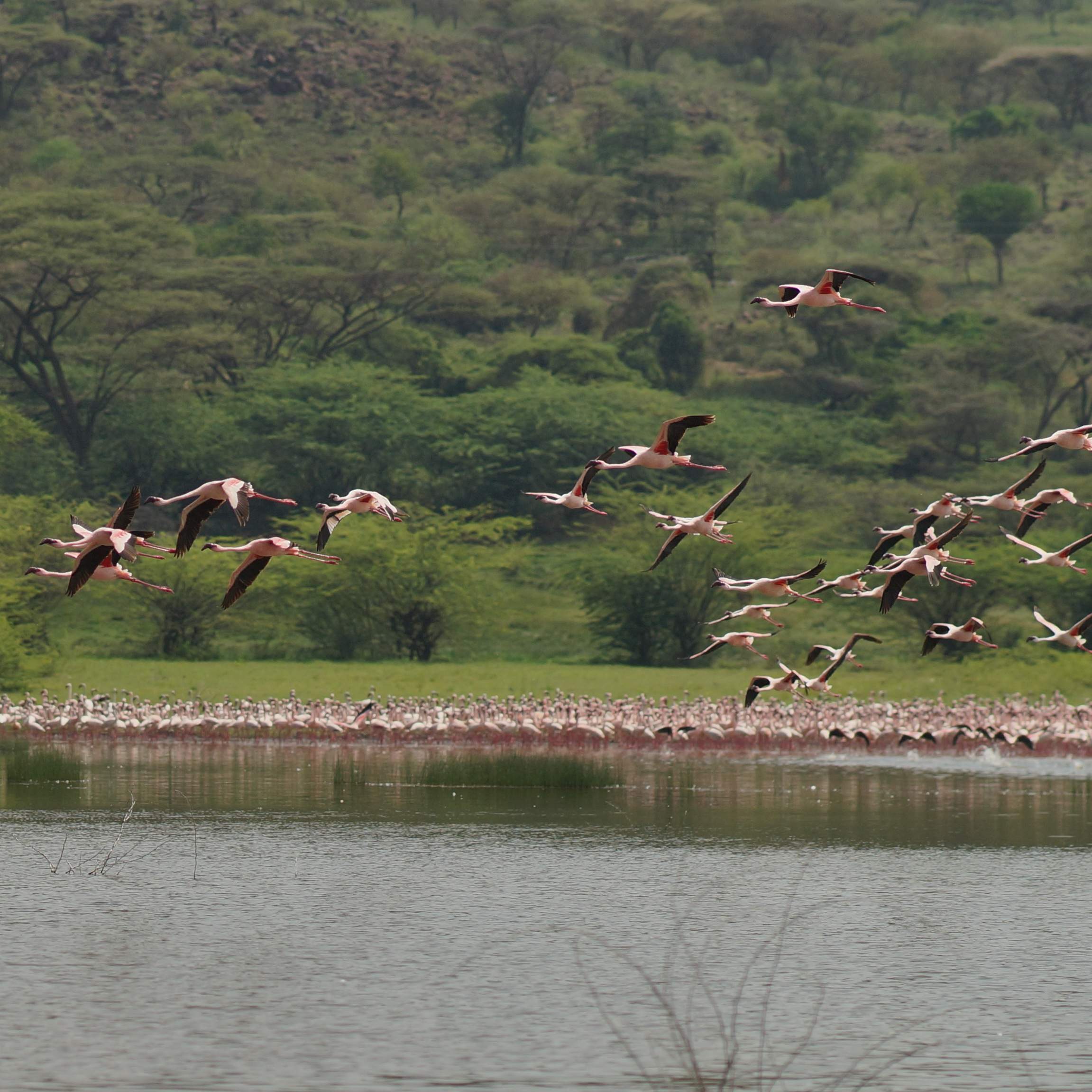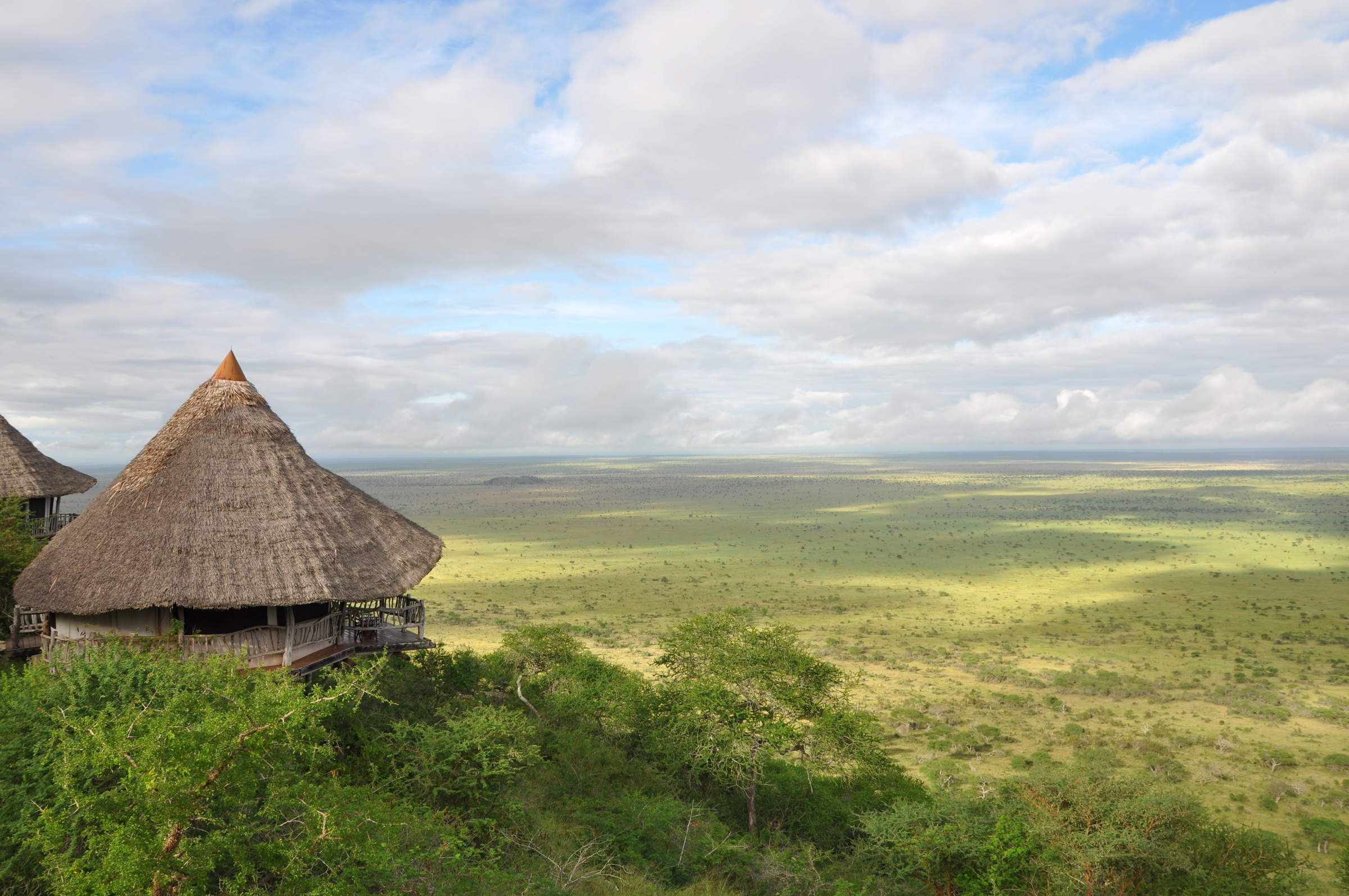Saruni Rhino: Our full report
Saruni Rhino is an intimate three-room lodge inside the remote Sera Community Conservancy in northern Kenya.
Built between beautiful doum palms on the banks of the seasonal Kauro River, it opened in 2017 and is the first and only lodge in East Africa to offer safaris specifically focused on tracking the critically endangered black rhino on foot.Saruni Rhino is the latest addition to the Saruni portfolio, which also include the excellent Saruni Mara, Saruni Wild and Saruni Samburu, to which it is very closely affiliated.
Just getting to Saruni Rhino is an adventure. Guests are driven either up the new Ethiopian highway and then east into the bush, or north-east along a dirt track. In either case, Saruni Rhino is about two hours drive from the Samburu National Reserve. As you drive through this very rural area of Kenya, you will see herds of cattle, goats and flocks of sheep, minded by semi-nomadic herdsmen. You'll also pass women walking miles to fetch water and children embarking on lengthy commutes to school. This gives a fascinating insight into the daily life and struggles of the Samburu people.
When you finally arrive at the lodge you are greeted by friendly staff who will offer you a refreshing drink and a very welcome cold towel. Saruni Rhino lies on the banks of the Kauro River, also referred to as a 'lugga' (which means dry riverbed). In front of the lodge is a permanent waterhole that is frequently visited by wildlife, including elephant, reticulated giraffe, impala, oryx and Grevy's zebra. When we stayed here in 2019 we were lucky enough to see a pack of wild dog here, coming for a morning drink.
A family banda (a family cottage with two ensuite bedrooms) was constructed in 2017, however despite this remains one of the smallest and most exclusive lodges in our Kenya programme, with a maximum occupancy of eight people.
The original two bandas, set either side of the main area, are very similar to one another: open at the front, with half stone walls on the sides and a thatched makuti roof. Although simply furnished, the bedrooms feel very homely, with particularly comfortable beds made of sturdy leadwood and covered by mosquito nets. Bright throws and rugs add colour to the rooms. The open-fronted rooms are designed to make the most of any night time breeze, (northern Kenya is usually quite hot), so electric fans are provided in each room.
Both bandas have a small veranda that overlooks the seasonal Kauro River. One has a hammock strung up between two palms, whilst the other has a day bed. This is a perfect place to relax and enjoy the wildlife that visits the river bed and water hole in front – although you'll need to watch out for any elephants that might walk past.
The main difference between the two bandas is the layout of the bathrooms. Both have a shower, basin, mirror and flush toilet, but in one the shower area is separated by a couple of metres from the bedroom, while the other has an en-suite at the back of the room. In line with the rest of the property, the bathrooms are not luxurious but they do possess a rustic charm.
Saruni Rhino's very comfortable family banda is located at the far end of the camp. As with the other two bandas, it is constructed of stone and makuti thatch and the open windows are covered with canvas gauze that can be zipped open during the day. A wide shaded veranda runs along the front with some comfy seating at one end and a rustic table and chairs at the other end with views toward the dry riverbed. Enter via a canvas door, which zips closed at night, into a comfortable lounge with two sofas around a coffee table and Persian rugs on the crazy paving floor. The two bedrooms lead off either side of the lounge. Each has a double bed, with brightly coloured bedspreads and cushions, and bedside tables with reading lamps. There is also space to hang clothes and store luggage. Behind each room is a spacious en-suite bathroom with reed walls. Double basins sit on top of a concrete vanity unit and there is also a flush toilet and large spacious open shower spanning the width of the room. Beside the family banda is a thatched sunshade with two sunloungers.
The main lounge and dining area at Saruni Rhino is similar in design to the bandas, with stone walls on three sides, a high thatched makuti roof and an open front. Again, the décor is understated but very pleasant, and furniture runs to a few sofas, a drinks cabinet and a dining table. Bright rhino artwork adds a splash of colour. This is where meals may be served when the weather doesn't permit dining in the dry riverbed.
A swimming pool has recently been added to Saruni Rhino which is very welcome in the northern Kenyan heat.
However, to talk at length about the design of Saruni Rhino would be missing the point. The reason guests visit is for the rhino encounters in the Sera Rhino Sanctuary – which are oustanding.
The 3,450km2 Sera Community Conservancy was set up in 2000 by the local community to protect the elephants which, at the time, were being badly poached. Their work has proved extremely successful and, in May 2015, ten black rhinos were re-introduced to this area, several of these have since had calves, bringing the population to 15 black rhinos as of 2019. This is the first time in more than 30 years that rhino have been able to return to their natural habitat in northern Kenya. Sera is also the only community conservancy in Africa to own and operate a sanctuary dedicated to the conservation of the black rhino, and money from every guest staying at the lodge goes straight into helping conserve these critically endangered animals.
The rhinos live in the heart of Sera, in a 107km2 fenced sanctuary that's about a half-hour drive from the lodge. When the project was started each rhino had a radio transmitter inserted into their horns, which helped the rangers to keep daily tabs on all animals. Over time the batteries in the transmitters have died and the rangers have reverted to traditional methods of tracking, looking for spoors and signs to locate the rhinos.
Each walk is led by an expert tracker as well as a highly trained guide from Saruni, and conservancy rangers follow behind the group to ensure that the walks are carried out safely.
It's important to note that whilst one ranger will be armed, you are likely to come reasonably close to the rhinos, so it is imperative that everyone does exactly as they are told. The guides are well trained in the best ways to move through the bush unnoticed, but if the rhinos suspect your presence, you will have to back away and leave them in peace.
Using termite mounds and fallen trees as cover, and the principle of always have a bush or other object to slip behind should the need ever arise, you approach an identified rhino on foot, with infinite patience and as silently as possible. You need to stay downwind and move with extreme care through the bush to remain undetected. A rhino's hearing is so acute that even the sound of a camera shutter is enough to alert them to your presence. However, their eyesight is very poor and thus with the trackers' help you can get remarkably close to these incredible animals, often given away by their noisy munching on the bushes.
Rhino-tracking is usually done in the afternoon, when the rhinos are most active. When we visited in 2019 we went on an afternoon trek to locate a large male who had previously been spotted a few hundred meters from the road. After a thorough safety briefing from our guide we slowly moved through the bush, reaching a large rock below which we could just make out the rhino resting in the shade. Remaining calm and quiet, we were able to approach within 15 meters of him where we were able to watch as he ate from a thorn bush. It was an incredible experience to be so close to a wild black rhino, knowing how elusive they can be and how rare they are across Africa. We also thought the guiding was first-rate.
We then continued our journey to meet up with two of the rangers whose sole job it is to look after a young black rhino, ‘Loijupu’, who is the process of being released into the wild in the Conservancy. After being abandoned by his mother he was initially looked after at the nearby Reteti Elephant Orphanage and when we visited in 2019 he still needed constant monitoring. He is still used to people, and reliant on regular feeds, however over time they hope to see him become increasingly independent.
Rhino-tracking is usually done in the afternoon, when the rhinos are most active. In the morning guests might want to experience one of Saruni Rhino's other activities:
The singing wells are a short drive away and well worth visiting. In an ancient tradition that few tourists have witnessed, Samburu pastoralists sing rhythmically to their cattle, encouraging them to drink from the wells. At other nearby waterholes it's also possible to see another amazing spectacle: hundreds of sandgrouse flying miles to collect water in their specially adapted feathers, before flying back to their nests where their chicks lie in wait for a drink. Guests may also visit Reteti Elephant Sanctuary in Namunyak Wildlife Conservancy, which is about two hours drive away. Here, orphaned elephant calves are hand reared before being released back into the wild. The young rhino we saw in the conservancy had just been released from here.
Our view
Saruni Rhino offers an unparalleled experience in East Africa and enables guests to contribute actively to rhino conservation. The rhino tracking is exhilarating, very proficiently conducted by the well-trained guiding team. The lodge itself is very comfortable, but it's also simple and very remote – and we would recommend this if you enjoy travelling to areas off the beaten path.
Geographics
- Location
- Northern Kenya, Kenya
- Ideal length of stay
- At least two nights to experience the amazing activities on offer.
- Directions
- It is about 2 hours by road from the sister camp Saruni Samburu and from Kalama Airstrip.
- Accessible by
- Fly-and-Transfer
Food & drink
- Usual board basis
- Full Board & Activities
- Food quality
- When we stayed at Saruni Rhino in 2019 we thought the food here was good. The dining is comparable to that of its sister property Saruni Samburu, with an emphasis on Italian cuisine and plenty of fresh ingredients.
For breakfast you can expect fresh fruit, cereal, eggs, sausages and bacon. To drink, there is tea, coffee and juice.
For lunch we had cold gazpacho soup served with freshly baked focaccia bread. This was followed by grilled red snapper with a lemon dressing, avocado and a chickpea & mango salad. Desert was fresh tropical fruits.
Dinner is often served under the stars in the dry riverbed in front of camp, which we loved. When we stayed in 2019 this was a heavier three-course meal, with a starter of pesto tagliatelle topped with parmigiano cheese, followed by tilapia fish, honey glazed carrots and green beans. Desert was a tasty caramelized pineapple. - Dining style
- Group Meals
- Dining locations
- Indoor and Outdoor Dining
- Further dining info, including room service
- On request
- Drinks included
- includes most drinks apart from Champagne and specially imported wines and spirits.
Bottled drinking water is also provided.
Special interests
- Walking safaris
- This camp offers walking safaris into the heart of the Sera Conservancy, where expert trackers seek out elusive black rhinos, accompanied by highly trained guides and conservancy rangers. It’s a unique opportunity for a close encounter on foot.
- See ideas for Walking safaris in Kenya
Children
- Attitude towards children
- Saruni Rhino does not accept children under the age of 16.
- Property’s age restrictions
- Minimum age 16
- Special activities & services
- There are no special activities for children.
- Equipment
- None.
- Generally recommended for children
- Saruni Rhino is better suited for adults, as the primary reason for staying here is to track the rhinos.
- Notes
- The camp is unfenced and big game frequently walks through camp, so children need to be under constant supervision.
Our travellers’ wildlife sightings from Saruni Rhino
Since mid-2018, many of our travellers who stayed at Saruni Rhino have kindly recorded their wildlife sightings and shared them with us. The results are below. Click an animal to see more, and here to see more on our methodology.

100% success

100% success

100% success

100% success

0% success

0% success

0% success

0% success

0% success

0% success

0% success

0% success

0% success

0% success

0% success

0% success
Communications
- Power supply notes
- There is power available 24 hours a day, and guests can charge their batteries in their rooms, however there is not sufficient power for hairdryers etc. There is a backup generator.
- Communications
- There is WiFi in the main area.
- TV & radio
- There is no TV.
- Water supply
- Borehole
- Water supply notes
- There are flush toilets, and plumbed in showers. Bottled drinking water is also provided.
Sustainability
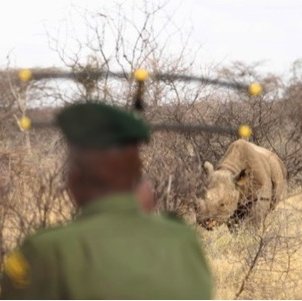
Rescuing the giants of the Sera Conservancy
Located in Sera Conservancy, in the undiscovered northern frontier of Kenya, the intimate and innovative Saruni Rhino camp is a 2 hours’ drive away from Kalama Conservancy. Surrounding the Samburu National Reserve, the eco design minimises the lodge’s negative impact on the environment. The lodge is built under a dry river bed allowing the indoor temperature in to be tolerable all year-round. The rooms are open fronted maximizing air circulation in hot climate and are built from local rock and stones found in the nearby area. The lodge uses solar power and informs guests on arrival about the importance of conserving power and water to avoid energy waste.
In February 2017, they expanded from lodges and opened Saruni Rhino Sanctuary. Saruni Rhino offers the first community conservancy dedicated to the conservation of the critically endangered black rhino. with this they could protect 30 of its kind. The sanctuary offers guests the once-in-a-lifetime experience of a walking safari tracking black rhinos on foot, accompanied by an expert Saruni guide and a highly-trained Sera Community Conservancy ranger.
Guests can also opt for ‘up close and personal’ encounters with ‘the supreme rhino of Sera’ or game drives to spot the Samburu specials (oryx, gerenuk, ostrich, Grevy’s Zebra, reticulated giraffe), buffalo, elephants, antelope and a plethora of birdlife.
Finally, conservation initiatives are being developed at the recently opened The Reteti Elephant Sanctuary in Namunyak Wildlife Conservancy. Here, visitors can observe and interact with orphaned and abandoned elephant calves. The aim of the new Sanctuary is to help animals readapt to the surrounding wild herds.
See more great sustainability projects in Kenya
Health & safety
- Malarial protection recommended
- Yes
- Medical care
- There are first aid kits in the main area and in the vehicles and the staff are trained in how to use these.
- Dangerous animals
- High Risk
- Security measures
- Askaris patrol the property day and night, and escort guests back to their rooms after dinner.
- Fire safety
- There is a fire extinguisher in the kitchen.
Activities
4WD Safari
Birdwatching
Cultural excursion
Elephant encounter
Guided walking safari
Private activities
Extras
- Disabled access
- Not Possible
- Laundry facilities
- Laundry is taken to Saruni Samburu, so while it is included in the rates at Saruni Rhino, it may be better to have this done at the main camp, or to wait until you get to a different lodge.
- Money
- There is a safe in the kitchen.
- Accepted payment on location
- There is nothing to pay for at Saruni Rhino – but if you want to tip then cash in USD or Kenyan Shillings is preferred.
Other lodges in Northern Kenya
Alternative places to stay in this same area.
